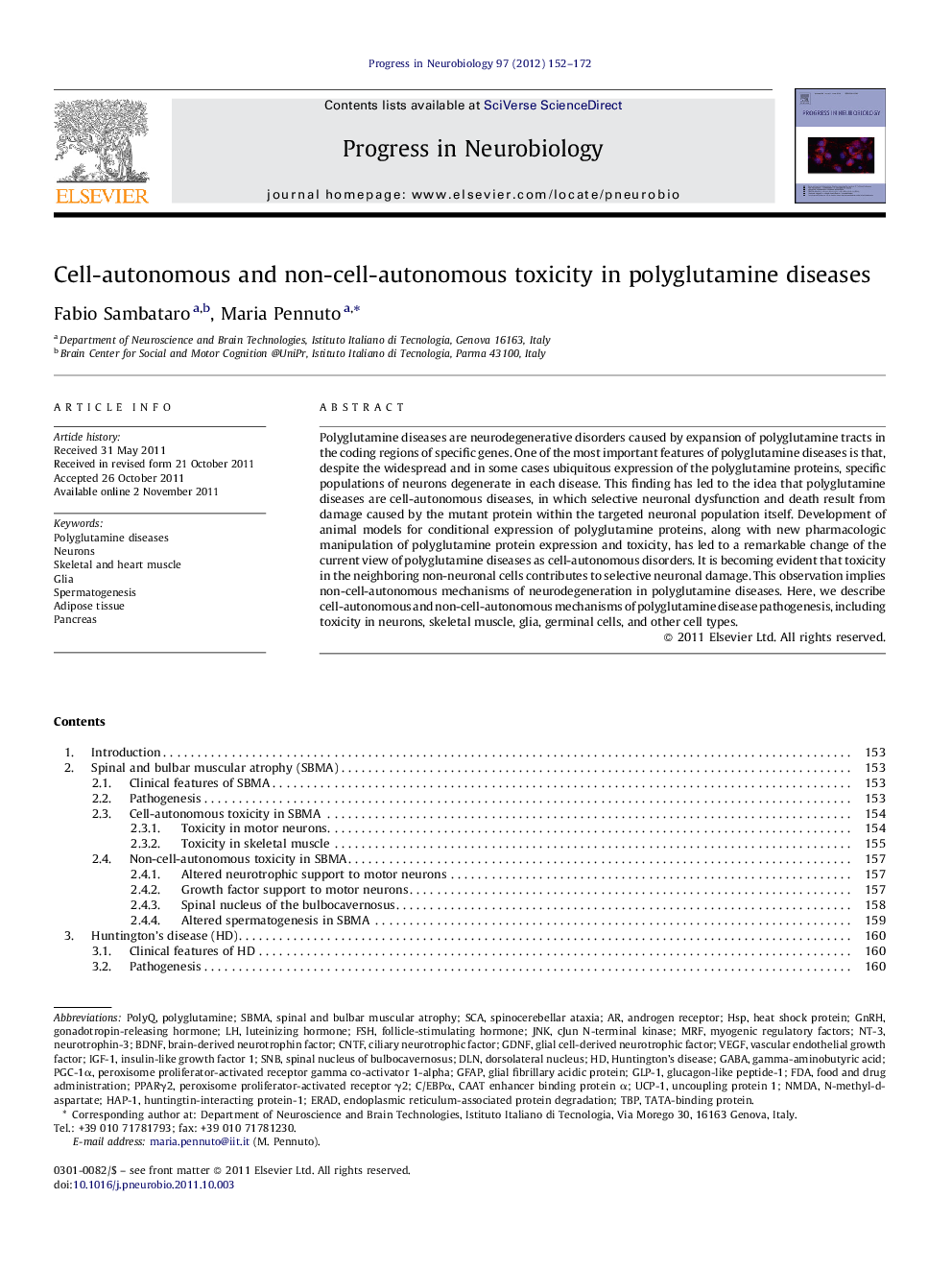| Article ID | Journal | Published Year | Pages | File Type |
|---|---|---|---|---|
| 6286596 | Progress in Neurobiology | 2012 | 21 Pages |
Polyglutamine diseases are neurodegenerative disorders caused by expansion of polyglutamine tracts in the coding regions of specific genes. One of the most important features of polyglutamine diseases is that, despite the widespread and in some cases ubiquitous expression of the polyglutamine proteins, specific populations of neurons degenerate in each disease. This finding has led to the idea that polyglutamine diseases are cell-autonomous diseases, in which selective neuronal dysfunction and death result from damage caused by the mutant protein within the targeted neuronal population itself. Development of animal models for conditional expression of polyglutamine proteins, along with new pharmacologic manipulation of polyglutamine protein expression and toxicity, has led to a remarkable change of the current view of polyglutamine diseases as cell-autonomous disorders. It is becoming evident that toxicity in the neighboring non-neuronal cells contributes to selective neuronal damage. This observation implies non-cell-autonomous mechanisms of neurodegeneration in polyglutamine diseases. Here, we describe cell-autonomous and non-cell-autonomous mechanisms of polyglutamine disease pathogenesis, including toxicity in neurons, skeletal muscle, glia, germinal cells, and other cell types.
⺠Polyglutamine diseases are caused by expansion of the CAG repeat in specific genes. ⺠Polyglutamine proteins are expressed both in neuronal and non-neuronal cells. ⺠Polyglutamine expansion is extremely and selectively neurotoxic. ⺠Neuronal death is the result of cell-autonomous and non-cell-autonomous toxicity. ⺠Primary damage in skeletal muscle, glia and germ cells contributes to pathogenesis.
